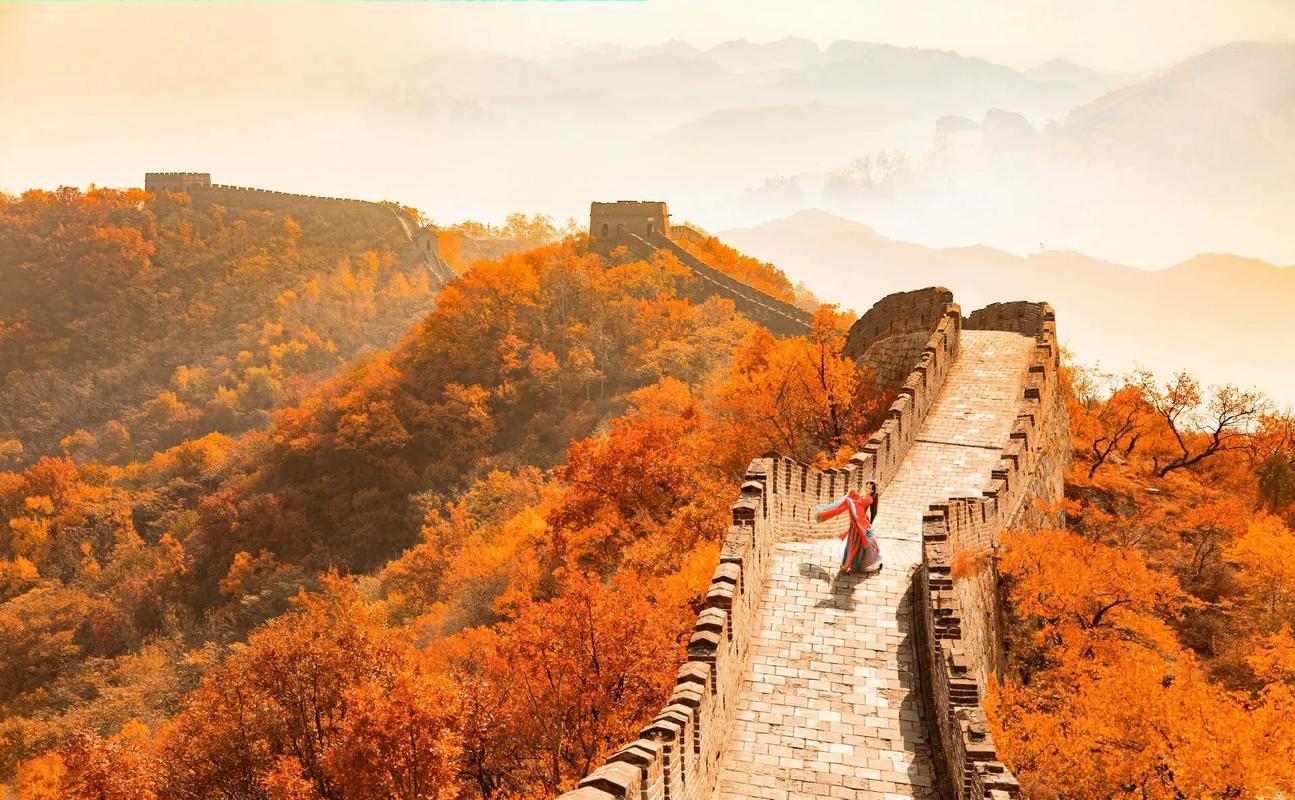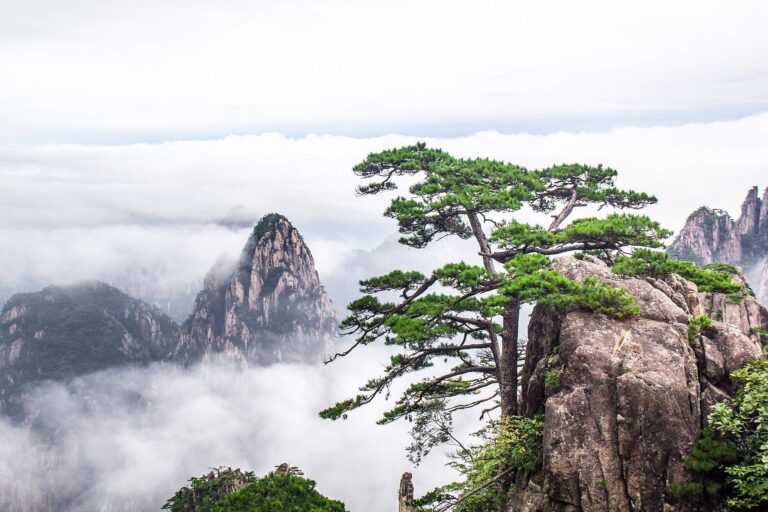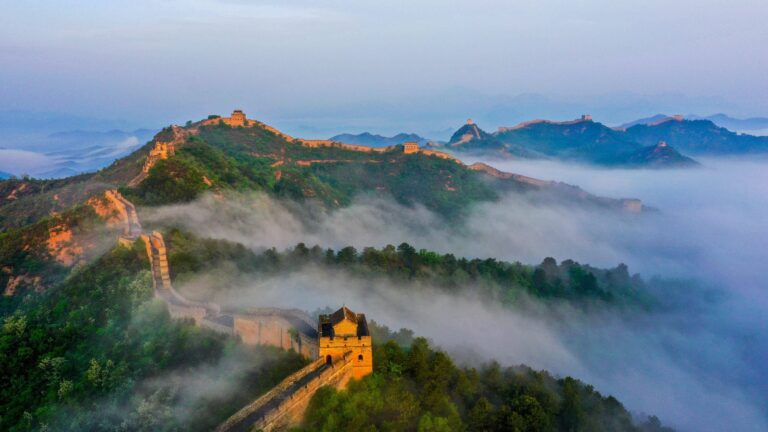Mutianyu Great Wall: The Ultimate Guide to China’s Most Beautiful Section
Standing majestically 73 kilometers northeast of Beijing, Mutianyu Great Wall represents one of China’s most spectacular and well-preserved sections of the ancient fortification. Unlike the crowded Badaling section, Mutianyu offers visitors an authentic Great Wall experience with breathtaking mouƒntain scenery, original Ming Dynasty architecture, and modern conveniences that make it accessible to travelers of all ages.
Having guided thousands of international visitors to this remarkable destination over the past decade, we can confidently say that Mutianyu provides the perfect balance between historical authenticity and visitor comfort. This comprehensive guide will help you plan your visit and understand why Mutianyu deserves a place on every China itinerary.
Quick Facts
Location: Huairou District, Beijing, China
Distance from Beijing: 73 kilometers (45 miles) northeast
Original Construction: Mid-6th century (Northern Qi Dynasty)
Current Structure: Rebuilt in 1569 during Ming Dynasty
Length at Mutianyu: 5.4 kilometers of restored wall
Height: 7-8 meters (23-26 feet) tall, 4-5 meters (13-16 feet) wide
Watchtowers: 23 original-style towers
Material: Primarily granite construction
UNESCO Status: Part of Great Wall World Heritage Site (1987)
Best Feature: Cable car and toboggan slide access
Crowd Level: Moderate (significantly less crowded than Badaling)
Table of Contents
History and Cultural Significance
Ancient Origins and Strategic Importance
Mutianyu Great Wall was first built in the mid-6th century during the Northern Qi, making it older than the Badaling section. The strategic location was chosen for its natural defensive advantages, utilizing the steep mountain terrain to create an impregnable barrier against northern invasions.
The name “Mutianyu” translates to “admiring the sky valley,” which perfectly captures the section’s elevated position and panoramic views. During the Northern Qi period (550-577 AD), this section served as a crucial defense point protecting the approaches to what would later become Beijing.
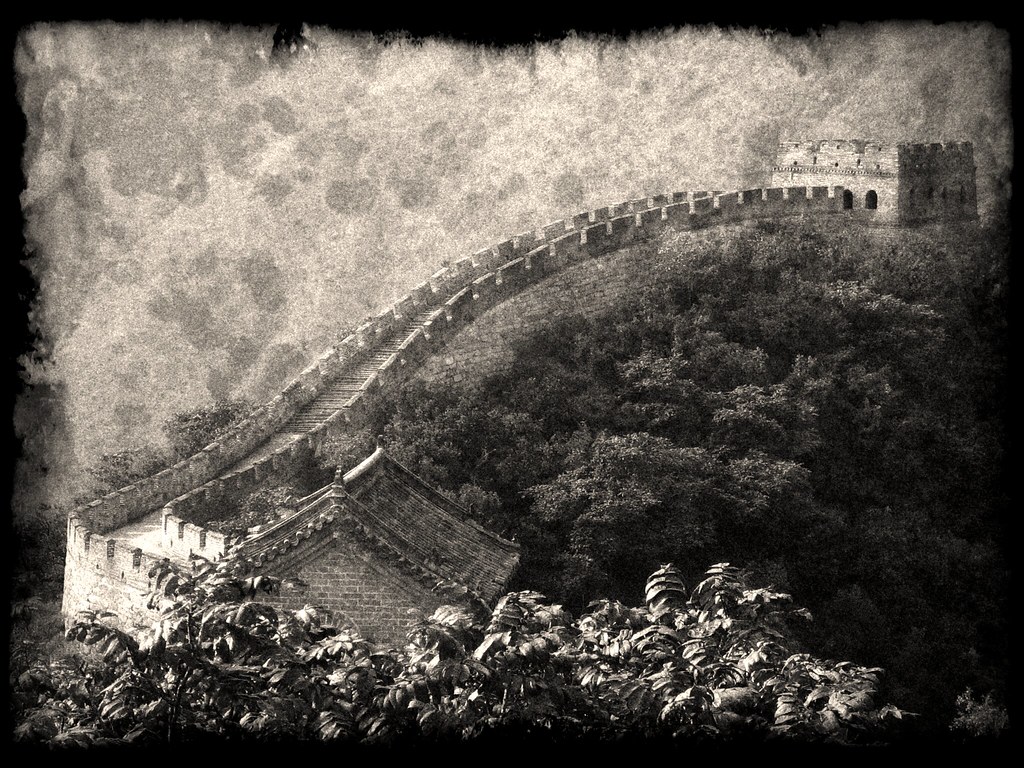
Ming Dynasty Reconstruction
The wall visitors see today dates primarily from the Ming Dynasty reconstruction period. In 1569, the Mutianyu Great Wall was rebuilt and till today most parts of it are well preserved. This reconstruction was part of a massive fortification project undertaken by the Ming emperors to defend against Mongol invasions from the north.
During this period, General Qi Jiguang, one of China’s most celebrated military strategists, oversaw significant renovations along the northern frontier. His innovations in wall construction and defensive strategy are evident throughout the Mutianyu section, particularly in the sophisticated watchtower designs and the double-sided crenellations that are unique to this area.
Architectural Innovation
What sets Mutianyu apart from other Great Wall sections is its unique architectural features. The walls are constructed primarily of granite, standing tall at an average height of 7-8 meters (23-26 feet) and 4-5 meters (13-16 feet) wide, with crenellated parapets on both sides. This double-sided design is rare along the Great Wall and demonstrates the military importance of this strategic location.
The 23 watchtowers at Mutianyu showcase remarkable engineering prowess. Each tower served multiple functions: lookout posts, storage facilities for weapons and supplies, and living quarters for garrison troops. The towers are positioned at strategic intervals, allowing for overlapping fields of fire and comprehensive surveillance of the surrounding terrain.
Why Mutianyu Great Wall is Worth Visiting
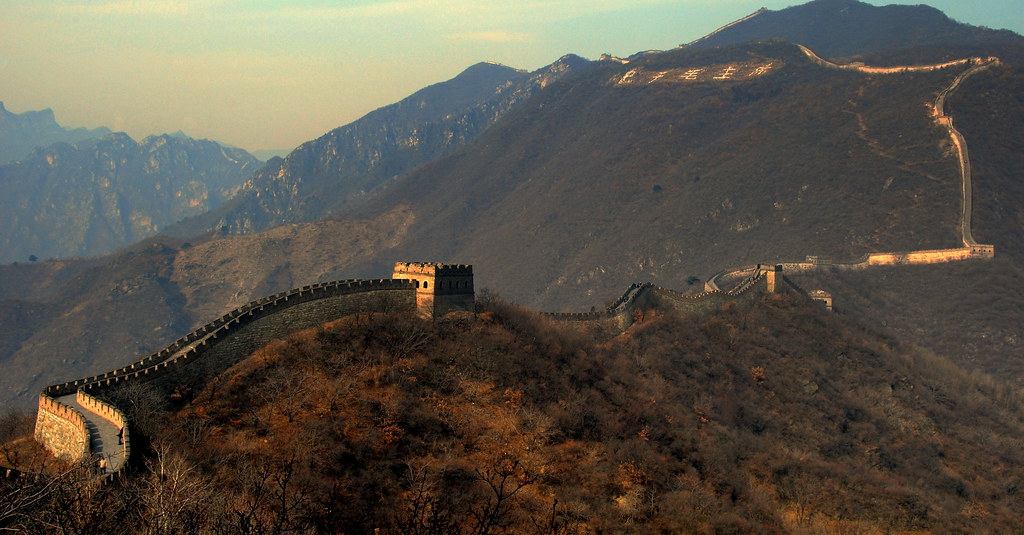
Authentic Historical Experience
After visiting all major Great Wall sections multiple times, I consistently recommend Mutianyu to first-time visitors for several compelling reasons. The section maintains its historical authenticity while providing modern amenities that enhance rather than detract from the experience.
Unlike heavily commercialized sections, Mutianyu preserves the original character of Ming Dynasty military architecture. The restoration work, completed using traditional materials and techniques, offers visitors a genuine glimpse into imperial Chinese military engineering. Walking along the ancient stones, you can almost hear the footsteps of soldiers who once patrolled these ramparts.
Superior Photography Opportunities

Mutianyu offers unparalleled photographic opportunities throughout the year. The wall snakes dramatically across forested mountains, creating compositions that have graced countless magazine covers and travel documentaries. The elevated position provides sweeping views of the surrounding Yanshan Mountains, while the well-preserved watchtowers create compelling foreground elements for photography.
During autumn, the surrounding deciduous forests transform into a tapestry of reds, oranges, and golds, creating one of China’s most spectacular natural displays. Spring brings delicate cherry blossoms and fresh green foliage, while winter transforms the landscape into a monochromatic masterpiece of snow-covered mountains and ancient stone.
Balanced Tourist Experience
One of Mutianyu’s greatest advantages is its balanced approach to tourism. The site attracts significantly fewer crowds than Badaling, particularly on weekdays and during shoulder seasons. This allows for more contemplative experiences and better photo opportunities without crowds of tourists in every frame.
The modern cable car system and toboggan slide add an element of excitement while preserving the wall’s historical integrity. These additions make the site accessible to elderly visitors and families with young children, democratizing access to this world heritage site.
Mutianyu Great Wall Highlights
The Iconic Watchtowers

The 23 watchtowers at Mutianyu represent some of the finest examples of Ming military architecture. Tower 14, accessible via the main cable car, offers panoramic views and serves as an excellent starting point for wall walking. The three-story structure features archer windows, storage rooms, and a command post that once coordinated defensive operations.
Towers 6 and 20 mark the practical limits of tourist access in each direction. Tower 6, reached by hiking west from the cable car station, provides spectacular views of the wall’s dramatic curves through mountainous terrain. Tower 20, accessible via a more challenging eastern route, offers solitude and pristine wall sections with minimal restoration.
The Famous “Wall Winding Like a Dragon”
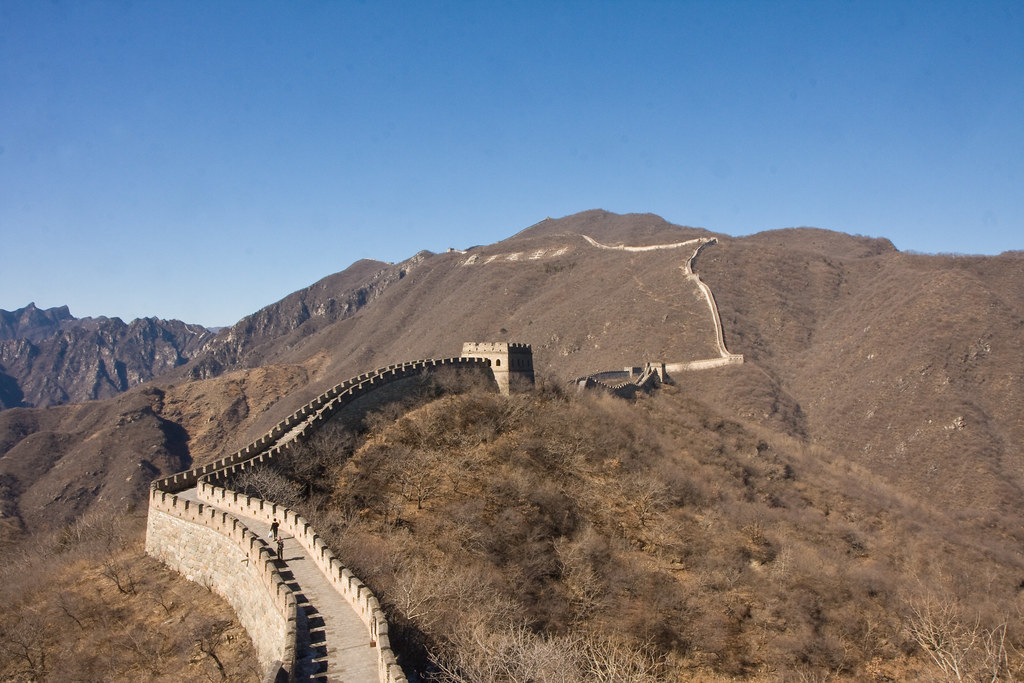
The section between Towers 11 and 15 showcases the Great Wall’s most photographed feature: the serpentine curves that follow the mountain ridgeline. This stretch demonstrates the engineering genius of ancient Chinese builders who adapted the wall to natural topography rather than forcing straight lines across difficult terrain.
The visual metaphor of a dragon winding through mountains resonates deeply with Chinese cultural symbolism. Dragons represent power, strength, and good fortune in Chinese mythology, making this section particularly meaningful for domestic visitors while providing international tourists with stunning visual experiences.
Unique Double-Sided Crenellations

Mutianyu features rare double-sided crenellations (defensive wall tops with alternating high and low sections). Most Great Wall sections have crenellations only on the outer side facing potential enemies. Mutianyu’s double-sided design reflects the complex military situation during the Ming Dynasty, when threats could emerge from multiple directions.
This architectural feature creates distinctive silhouettes and provides additional photographic opportunities. The symmetrical design also enhances the wall’s aesthetic appeal while maintaining its defensive functionality.
The Cable Car and Toboggan Experience
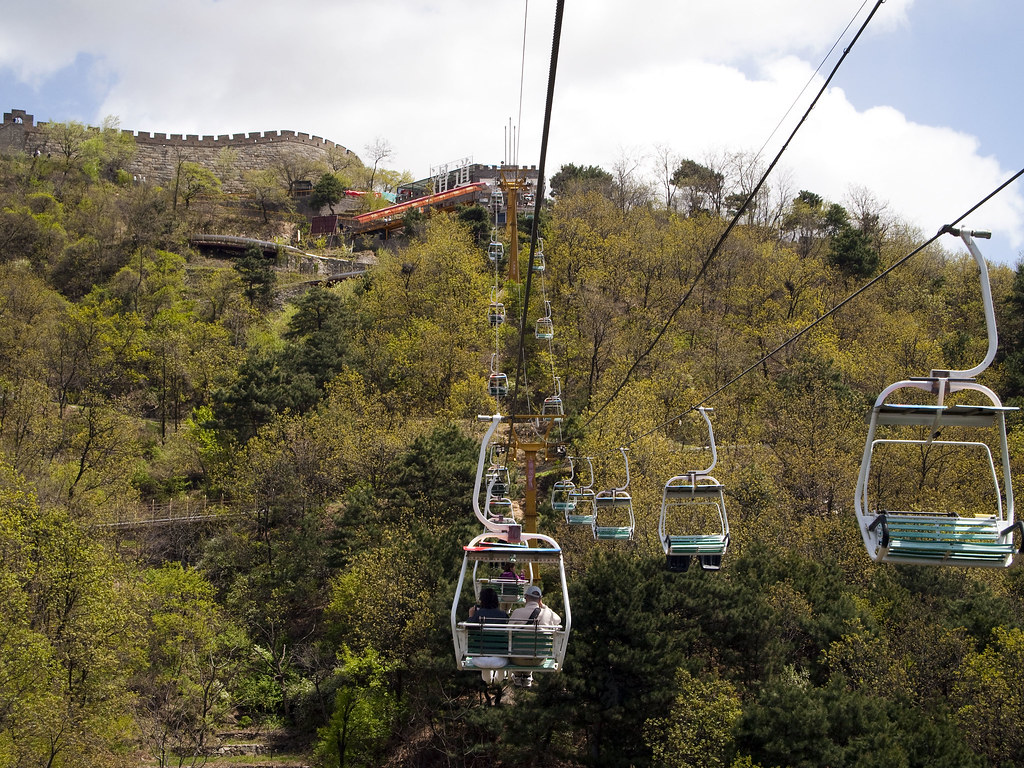
The modern cable car system, installed in the 1980s, provides effortless access to the wall’s main section. The 10-minute ride offers gradually revealing views of the wall and surrounding landscape, building anticipation for the main experience. The cable car operates year-round in most weather conditions, making Mutianyu accessible even during challenging seasons.
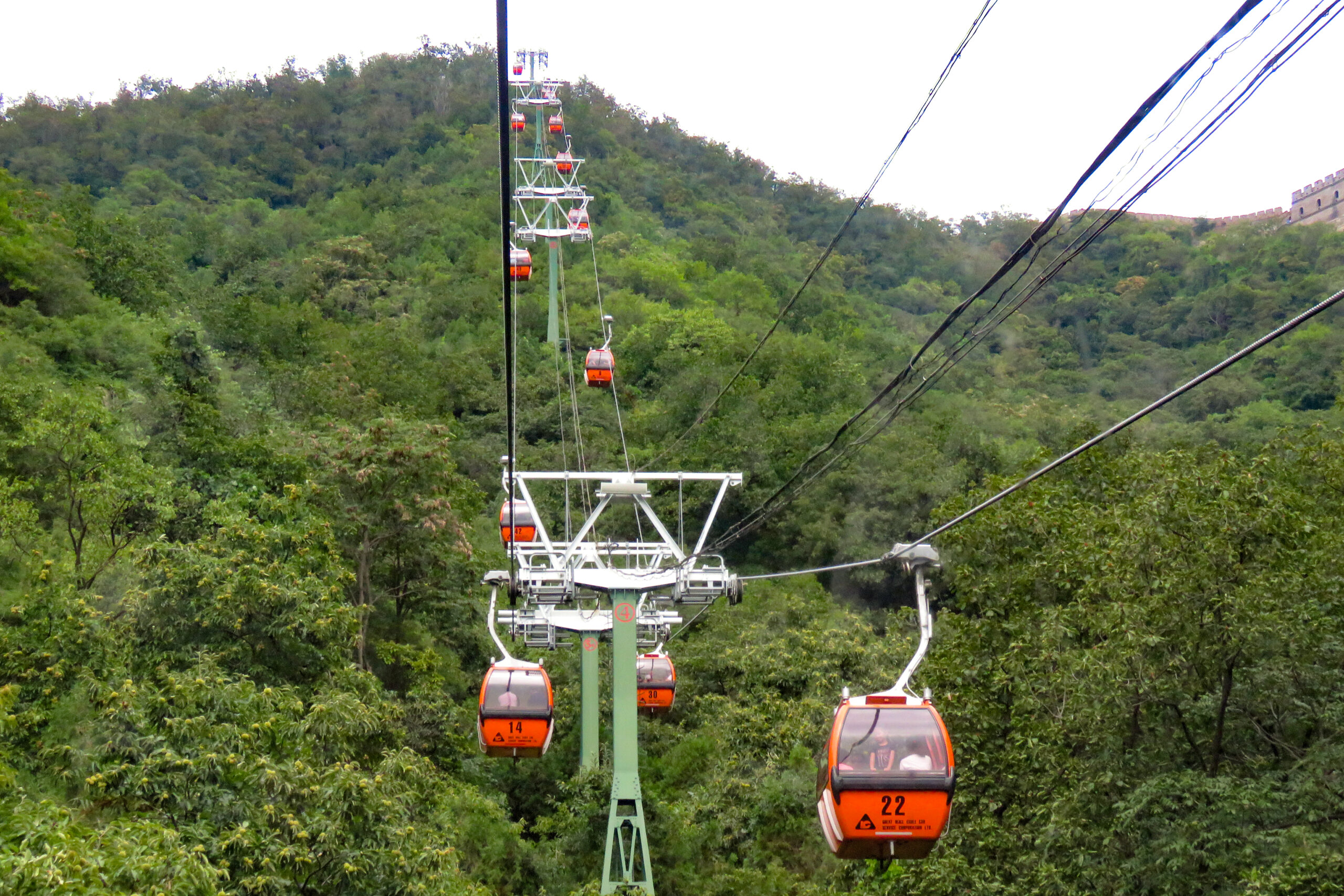
The return journey via toboggan slide (optional) adds an unexpected element of fun to a historical visit. The controlled descent through forested slopes provides a unique perspective on the mountain environment while offering gentle excitement suitable for most age groups. This combination of ancient history and modern recreation creates memorable experiences for all family members.
Best Time to Visit Mutianyu Great Wall
Seasonal Considerations
Spring (April-May): Ideal weather with mild temperatures (15-20°C/59-68°F) and blooming vegetation. Occasional light rain requires waterproof clothing. Crowds are moderate, and visibility is generally excellent. Cherry blossoms and fresh green foliage create beautiful photographic opportunities.
Summer (June-August): Warm weather (25-30°C/77-86°F) with occasional thunderstorms. Peak tourist season means larger crowds, especially on weekends. Early morning visits (8:00-10:00 AM) offer cooler temperatures and smaller crowds. Lush green landscapes provide dramatic backdrops for photography.
Autumn (September-November): Considered the optimal visiting season. Comfortable temperatures (10-20°C/50-68°F), minimal rainfall, and spectacular fall foliage. October offers peak autumn colors but also peak crowds. November provides excellent weather with fewer tourists.
Winter (December-March): Cold temperatures (-5 to 5°C/23-41°F) and occasional snow create dramatic winter landscapes. Significantly fewer crowds allow for more solitary experiences. Snow-covered Great Wall provides unique photographic opportunities. Cable car may close during severe weather.
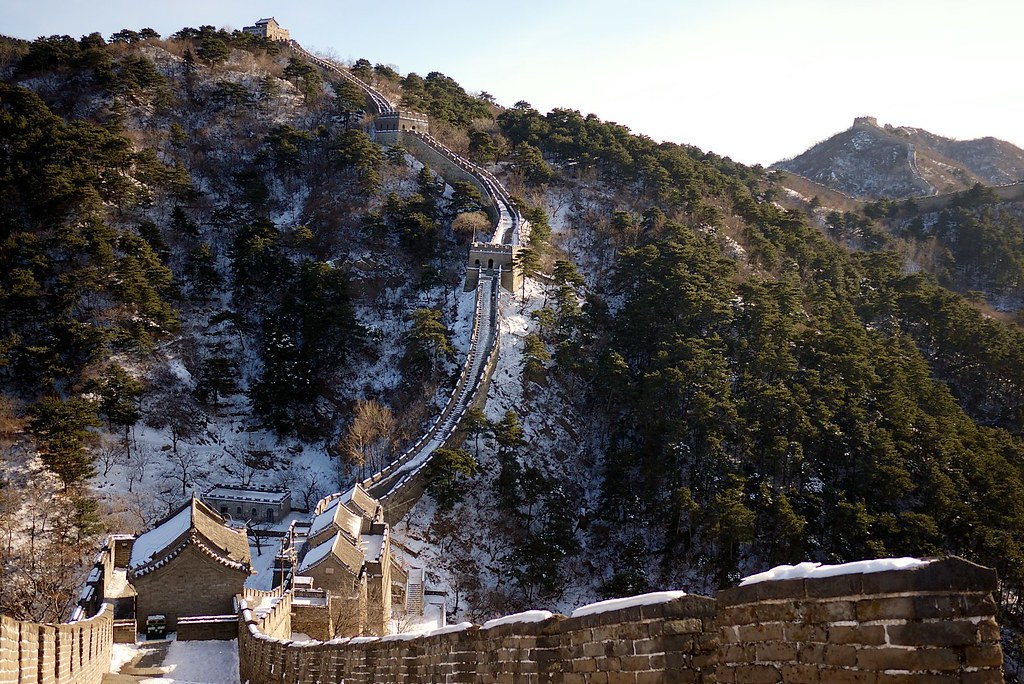
Weekly and Daily Timing
Best Days: Tuesday through Thursday offer the smallest crowds. Monday can be busy with weekend overflow. Friday afternoon brings weekend crowds arriving early.
Optimal Times:
- Early Morning (8:00-10:00 AM): Smallest crowds, best light for photography, cooler temperatures in summer
- Late Afternoon (3:00-5:00 PM): Good lighting, moderate crowds, comfortable temperatures
- Avoid: 11:00 AM – 2:00 PM peak crowd period, especially on weekends
Weather Considerations
Beijing’s continental climate creates significant seasonal variations. Spring and autumn offer the most comfortable conditions, but each season provides unique experiences. Summer thunderstorms can create dramatic sky conditions for photography but may temporarily close outdoor facilities.
Winter visits require appropriate clothing but reward visitors with pristine snow-covered landscapes and minimal crowds. The contrast between ancient stone and fresh snow creates particularly striking visual compositions.
Special Experiences at Mutianyu
Sunrise and Sunset Tours

Professional photographers and serious enthusiasts should consider sunrise or sunset visits. These require special arrangements with local operators, as standard operating hours don’t accommodate these times. The golden hour lighting transforms the ancient stones into warm, glowing surfaces while long shadows emphasize the wall’s three-dimensional character.
Sunrise visits offer the advantage of having the wall essentially to yourself, creating opportunities for solitary contemplation impossible during regular hours. The morning mist often clings to mountain valleys, creating mystical atmospheres perfect for memorable photography.
Photography Workshops
Several Beijing-based photography instructors offer specialized workshops at Mutianyu. These experiences combine technical photography instruction with cultural education about Great Wall history and significance. Participants learn composition techniques specific to architectural photography while gaining deeper appreciation for Chinese cultural heritage.
These workshops typically last 4-6 hours and include transportation from Beijing, professional instruction, and cultural insights unavailable to independent visitors. The combination of technical skill development and cultural education creates lasting memories beyond simple sightseeing.
Cultural Performance Integration
During peak seasons, traditional Chinese cultural performances occasionally take place near the visitor center. These include traditional music performances, martial arts demonstrations, and historical reenactments that provide context for the Great Wall’s military and cultural significance.
While not daily occurrences, these performances when available enhance visitor understanding of Chinese military history and cultural traditions. Local operators can arrange visits timed to coincide with these special events.
Hiking Beyond Standard Routes
Experienced hikers can arrange guided treks beyond the standard tourist routes. These adventures follow unrestored wall sections connecting to Jiankou Great Wall (westward) or exploring original wall foundations in the surrounding mountains.
These experiences require good physical fitness and professional guides familiar with terrain and safety considerations. The rewards include pristine historical sites, challenging photography opportunities, and insights into original wall construction techniques.
Planning Your Visit to Mutianyu Great Wall
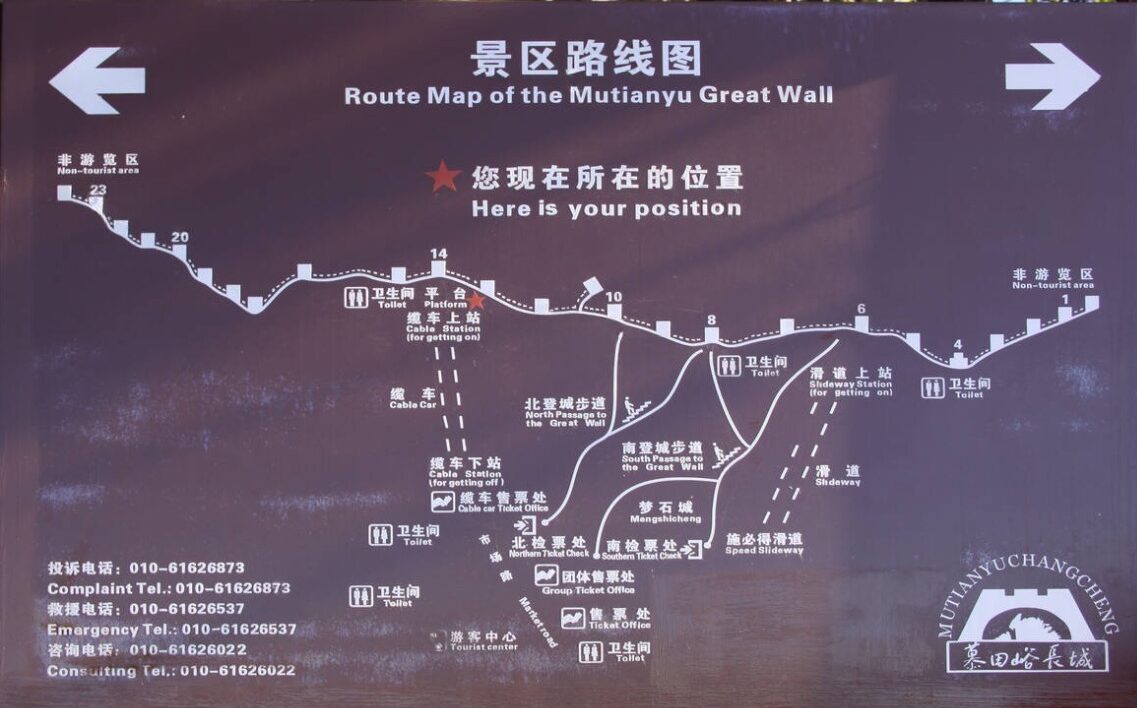
Getting There from Beijing
By Tour Bus: Most convenient option for first-time visitors. Reputable tour operators provide round-trip transportation, entrance tickets, and English-speaking guides. Journey time: approximately 1.5-2 hours each way depending on traffic and pickup locations.
By Private Car/Taxi: Direct route via Jingcheng Expressway (京承高速) to Huairou Exit, then follow signs to Mutianyu. Total distance: 73 kilometers. Travel time: 1.5-2 hours depending on traffic conditions. Return journey can take longer during peak periods.
By Public Transportation: Take Subway Line 1 to Dongzhimen Station, then Bus 936 to Huairou Bus Station, followed by local Bus H23 or H24 to Mutianyu. Total journey time: 3-4 hours. This option requires patience but costs significantly less than private transportation.
By High-Speed Rail: Take the Beijing-Chengde Railway to Huairou North Station (when operational), then local bus or taxi to Mutianyu. This newest option reduces travel time but requires checking current service schedules.
Opening Hours and Ticket Information
Standard Operating Hours:
- Peak Season (April-October): 8:00 AM – 5:00 PM
- Low Season (November-March): 8:30 AM – 4:30 PM
Ticket Prices (2026):
- Adult Entrance: 45 Yuan for adults
- Senior Citizens (65+): 20 Yuan for seniors
- Children: 20 Yuan for Children under 1.4 meters, and FREE for children under 1.2 meters
- Cable Car Round Trip: 140 Yuan adult, 100 Yuan child
- Chairlift Up/Toboggan Down: 140 Yuan adult, 100 Yuan child
- Shuttle Bus: 15 Yuan round trip (from parking to wall base)
Advance Booking: To reserve tickets for Mutianyu Great Wall, follow these steps: 1) Go to its official website and click “Reservation Center – Tickets”. Online booking recommended during peak seasons and holidays.
What to Bring
Essential Items:
- Comfortable walking shoes with good traction
- Weather-appropriate clothing (layers recommended)
- Sun protection (hat, sunscreen, sunglasses)
- Water bottle (refill stations available)
- Camera with extra batteries/memory cards
- Cash for souvenirs and additional services
Seasonal Additions:
- Spring/Summer: Rain jacket, insect repellent
- Fall: Warm jacket for temperature variations
- Winter: Thermal clothing, ice grippers for shoes, hand warmers
Photography Equipment:
- Tripod for landscape photography
- Polarizing filter for enhanced sky contrast
- Wide-angle lens for architectural shots
- Telephoto lens for distant wall sections
Facilities and Services
Visitor Center: Modern facility with restrooms, gift shop, restaurant, and information desk. Staff speak basic English and can provide maps and general guidance. Open during all operating hours.
Dining Options:
- Full-service restaurant near cable car base station
- Snack stands at various locations along tourist routes
- Vending machines for beverages and light snacks
- Picnic areas for visitors bringing their own food
Shopping: Gift shops offer traditional Chinese souvenirs, Great Wall-themed merchandise, and local crafts. Prices are generally reasonable compared to Beijing city center shops. Credit cards accepted at main gift shop.
Accessibility: Cable car provides access for visitors with limited mobility. However, wall walking requires good physical condition due to steep steps and uneven surfaces. Wheelchairs cannot navigate most wall sections.
Frequently Asked Questions

How long should I plan for my visit?
Most visitors spend 3-4 hours at Mutianyu, including transportation time from the parking area. Active hikers exploring multiple tower sections may need 5-6 hours. Half-day tours from Beijing typically allocate 6-8 hours including travel time.
Is Mutianyu suitable for children and elderly visitors?
Yes, the cable car system makes the main wall section accessible to most age groups. However, walking on the wall itself involves steep steps and uneven surfaces requiring reasonable physical fitness. The toboggan slide is suitable for ages 6 and up.
Can I visit Mutianyu independently without a tour group?
Absolutely. Independent visits allow more flexible timing and personalized experiences. However, consider language barriers and transportation logistics when planning. Many independent visitors hire private drivers for convenience.
What’s the difference between Mutianyu and Badaling Great Wall?
Mutianyu offers a more authentic experience with fewer crowds, better scenery, and unique architectural features like double-sided crenellations. Badaling is more accessible from Beijing but significantly more crowded and commercialized. Mutianyu provides better value for serious Great Wall experiences.
Are there restrooms and food available?
Yes, modern restroom facilities are located at the visitor center, cable car stations, and several points along the wall. Restaurant and snack facilities provide Chinese and basic international food options. Water and beverages are available throughout the site.
Can I hike beyond the main tourist area?
Advanced hikers can explore unrestored sections with proper guides and equipment. These adventures require good physical fitness and safety awareness. Independent hiking beyond marked tourist areas is not recommended due to safety concerns.
What photography restrictions exist?
Photography is generally permitted throughout public areas. Commercial photography or drone usage requires special permits. Tripods are allowed but consider other visitors when setting up equipment in crowded areas.
Is English spoken at Mutianyu?
Basic English is spoken at ticket counters, visitor information, and by some tour guides. However, don’t expect fluent English throughout the site. Translation apps can be helpful for detailed communications.
What happens in bad weather?
Light rain and snow don’t typically close the site, but cable cars may suspend operations during severe weather conditions. Indoor facilities provide shelter during storms. Winter ice can make wall surfaces slippery, requiring extra caution.
Can I leave and re-enter with the same ticket?
Standard entrance tickets are typically single-use. However, specific policies may vary, and it’s best to confirm with ticket staff if you need to leave temporarily. Cable car tickets are generally single-use as well.
Conclusion
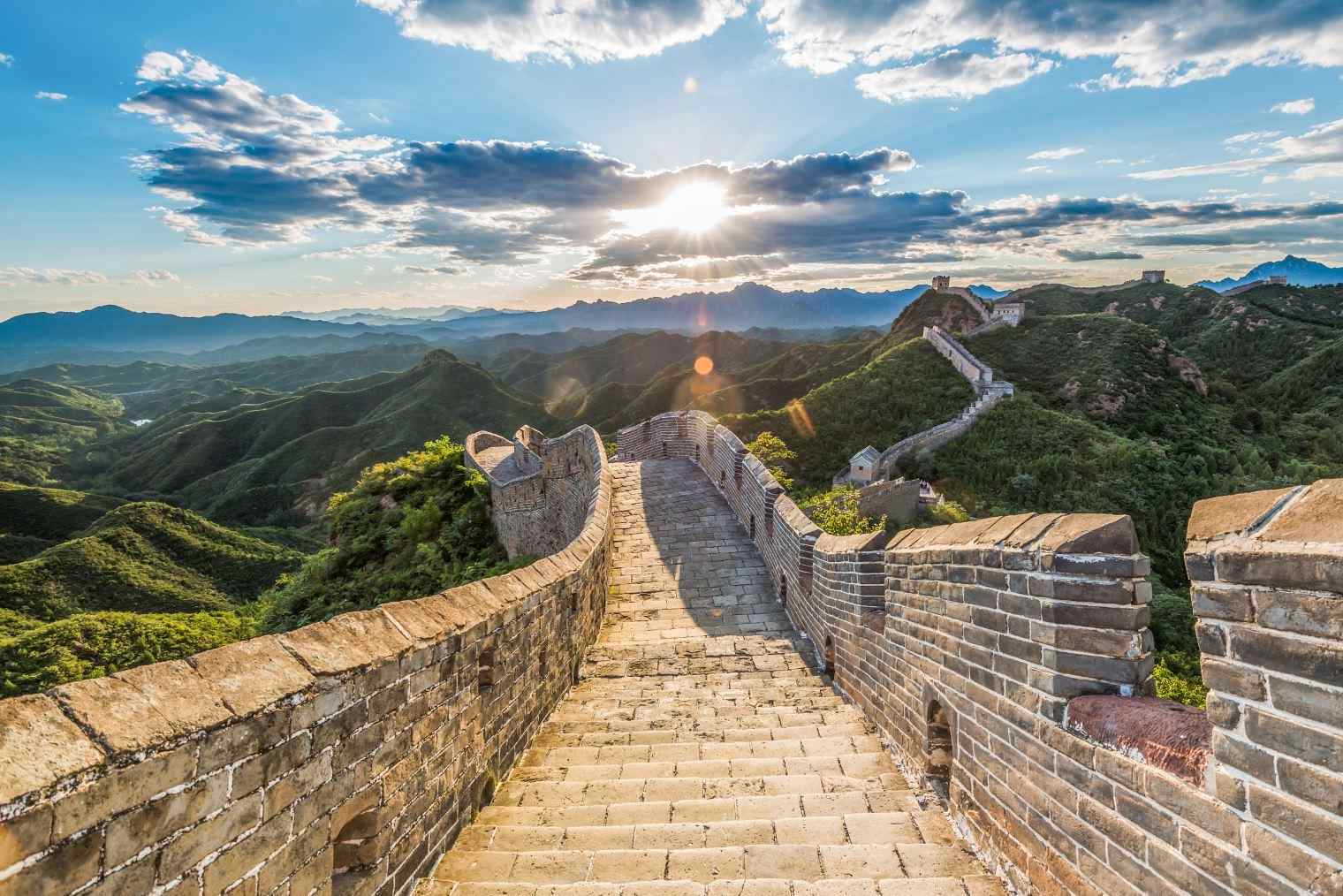
Mutianyu Great Wall stands as China’s most balanced Great Wall experience, combining historical authenticity with modern accessibility. The section’s unique architectural features, dramatic mountain setting, and manageable crowd levels create ideal conditions for both casual visitors and serious cultural enthusiasts.
The careful restoration work preserves Ming Dynasty military engineering while incorporating thoughtful modern amenities. This approach respects the site’s World Heritage status while ensuring accessibility for international visitors seeking authentic Chinese cultural experiences.
Whether you’re capturing the serpentine wall winding through autumn forests, contemplating the engineering achievements of ancient Chinese civilization, or simply enjoying family time at one of the world’s most iconic destinations, Mutianyu delivers experiences that justify its reputation as China’s most beautiful Great Wall section.
The investment in visiting Mutianyu extends beyond simple sightseeing. The experience provides tangible connections to Chinese history, impressive examples of human achievement, and memories that resonate long after returning home. For travelers seeking to understand China’s cultural heritage while enjoying spectacular natural beauty, Mutianyu Great Wall offers an unmatched combination of education and inspiration.

A Personal Note from Our Travel China With Me Team
After guiding thousands of international visitors to Mutianyu over the past decade, our team consistently witnesses the transformative power of experiencing this remarkable heritage site. The moment our guests first glimpse the ancient wall winding dramatically through pristine mountain landscape, we see expressions of wonder that remind us why we’re passionate about sharing China’s cultural treasures.
Our founder first visited Mutianyu in 2005 as a backpacking student and was immediately struck by the site’s perfect balance of historical authenticity and natural beauty. That initial visit sparked a career dedicated to creating meaningful cultural exchanges between international visitors and Chinese heritage sites.
We’ve watched elderly grandparents navigate the cable car system with excitement, seen young families create lasting memories while walking ancient ramparts, and guided professional photographers capturing award-winning images of this architectural masterpiece. Each visit reinforces our conviction that Mutianyu represents China’s finest Great Wall experience.
Our commitment extends beyond simple tour operations. We actively support local communities around Mutianyu, employ local guides who share intimate knowledge of the region’s history and culture, and contribute to conservation efforts that preserve this World Heritage site for future generations. When you travel with us to Mutianyu, you join a community of cultural enthusiasts who believe travel can create positive impacts for both visitors and destinations.
We invite you to experience Mutianyu Great Wall through our carefully crafted tours that combine expert guidance, cultural insights, and practical logistics that eliminate stress while maximizing discovery. Contact our team to begin planning your journey to one of humanity’s greatest architectural achievements, where ancient Chinese engineering meets contemporary travel excellence.


